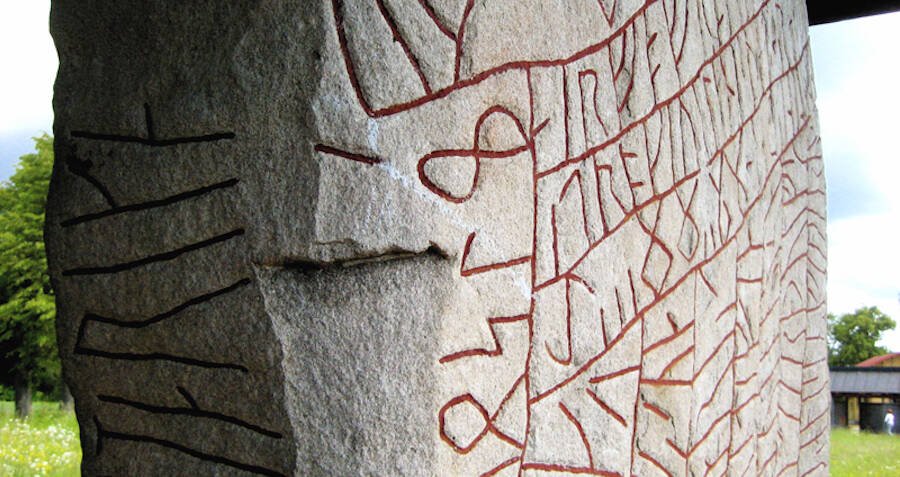Rök Runestone: Where Father Mourned Dead Son
Recently, more and more artifacts dating back to the Viking Age have been excavated. This managed to lift up the public interest toward the Viking history to the new heights. The archaeologists believe that it was a Viking father who erected the Rök runestone in memory of his dead son.
The Rök runestone, like many other Viking runestones, featured various lines of runes in stone. It is now located beside the church in Rök somewhere between Mjolby and Odeshog.

Rok runestone
By studying the runes carved on the runestone, the archaeologists concluded that they were carved in the 9th century. In the 19th century, the stone was discovered and at that time it had been built into the church wall. Back in those days, people used the rune stones as the building materials. They were yet to see the historic values of the runestones at that time. A few decades after the discovery, the runestones were separated from the wall church. Some parts of the runes were damaged; yet, the majority of them are readable.
If some wonder why this runestone is unique, here are some reasons. This runestone allegedly contains a piece of missing Norse mythology. It historically mentioned Ostrogothic king Theodoric the Great who once controlled the empire from the Atlantic Ocean to the Adriatic Sea. The runestone also contained the longest pre-Christian text as a runic inscription- approximately 760 characters. It also displayed the talent of the carver at that time.

Rok runestone in preservation now
The content on the runestone really challenged the readers because it contained many kennings and displaying the command of different alphabets and writing styles as well.
At the beginning of the runestone carved the mourning by the father for his deceased son.
In memory of Vémóðr/Vámóðr stand these runes.
And Varinn coloured them, the father,
in memory of his dead son.
By far, theories about the interpretation of the runestones have been put forward. But none of them could serve as the main explanation for the runes. While we cannot closely link all of the figures in the texts, we can study them separately.
It mentioned the Theodoric the Great and probably the statue of him sitting on his horse. The stone probably mentioned the death of Theodoric and the church considered him as a cruel and guilty king.
Gunnr probably referred to the Valkyrie Odin's female helping spirit. This was known as a kenning in Norse literature and her horse was the wolf.
The story about the 20 kings possibly referred to the four groups of five brothers and each of these shared the same name. This piece of mythology was long gone but the scholars guessed they were popular back in their time.
In the last part of the inscription, it mentioned the benefits of worshipping Thor who was a common Norse deity.




